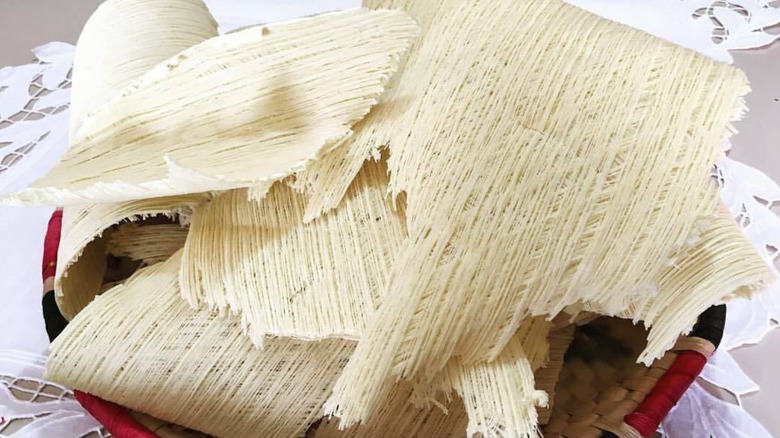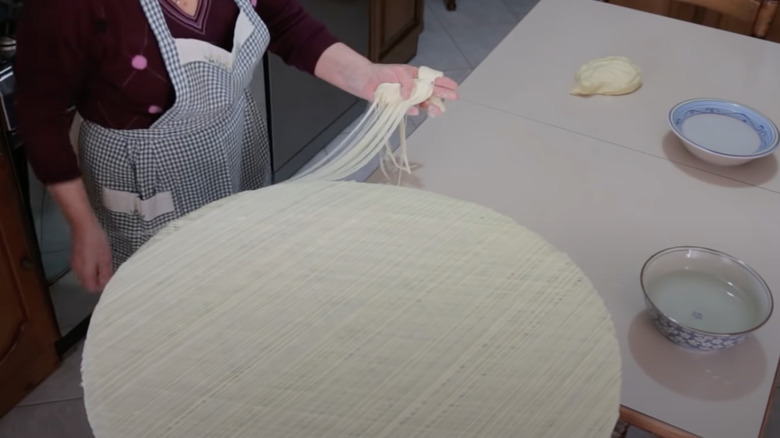The World's Rarest Pasta Recipe Is Now Being Taught To Outsiders
Unless you've been to Sardinia — or know someone who has — you've probably never heard of "su filindeu." The pasta, which means "God's yarns," is made with three ingredients — durum semolina, water, and a bit of salt. All are mixed and kneaded until the dough is soft and elastic. You can achieve this by kneading steadily and adding salted water at the right time. According to the Slow Food Foundation, determining the timing by touch is tricky. Once the dough is ready, it is stretched and folded into 256 thin strands, per The Washington Post. After folding, it is laid on a wooden tray known as a fundu in three layers to dry. When the pasta is ready, it is broken apart by hand, then cooked.
There aren't many sauce options for su filindeu. According to Pasta Grannies, tradition dictates it is served just one way — in mutton broth with added fresh pecorino cheese.
For years, the preparation of su filindeu was a Sardinian secret that belonged to a handful of women from just one family. So it's no surprise that it has become the world's rarest pasta. But that is about to change.
The art of making su filindeu is no longer a secret
Rafaella Marongiu Selis calls herself a "black sheep" for choosing to share the secret of making su filindeu. She learned how to make the pasta from her mother, who picked up on the technique from her mother. Due to the secrecy of the pasta, it has been entered into the Ark of Taste and categorized as an endangered food, per The Washington Post. Selis is hoping to change that, saying, "If we become too selfish, the tradition will die. I am doing this to pass it on."
It once took the Selis women months to make the pasta, which was then served just once — to those who undertook a pilgrimage to the shrine of the Catholic Saint Francis of Lula. But that has also changed because people began asking to buy the delicacy. Now it can be purchased for $33 per kilo, or per 2.2 pounds. In 2019, Selis began teaching professional chefs the craft, and last year she opened a small class so regular enthusiasts could also learn to make su filindeu. She has since scheduled more courses for later in the year.
Selis says that the secret to making su filindeu lies in practicing the technique of kneading and pulling every day. She said, "Filindeu is something that you have to find in your being and your hands. There is no secret. All you need is passion, consistency, and lots of patience."

